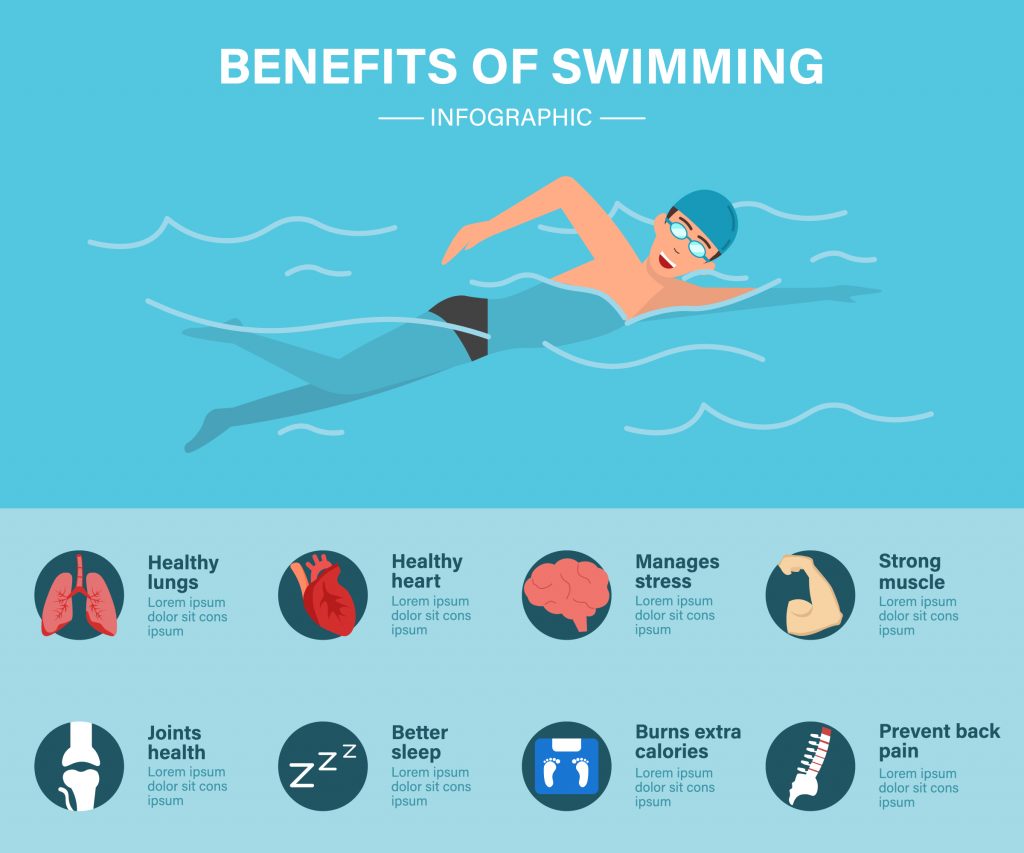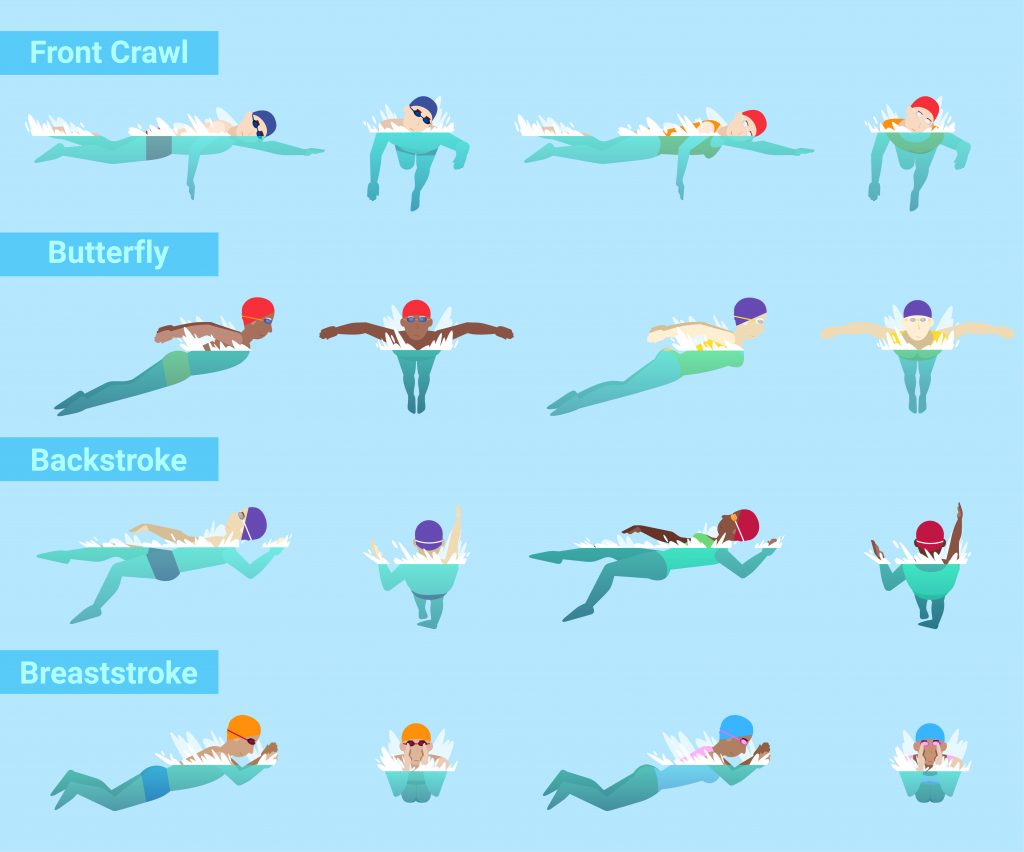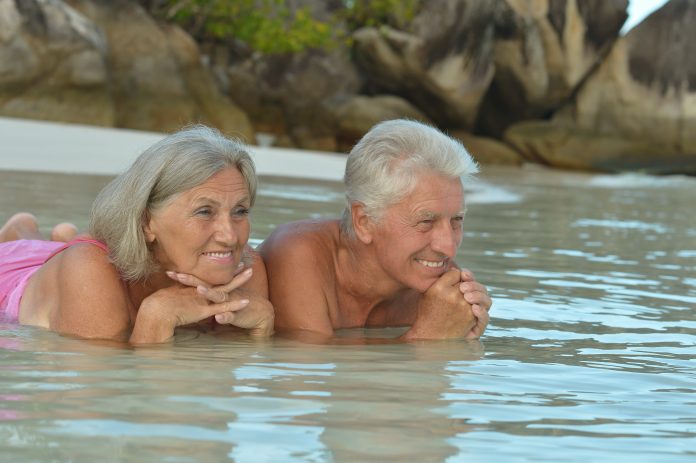There are so many benefits that seniors can gain from swimming regularly, writes Vinita Alvares Fernandes
As the summer heat creeps up on us, sweating it out during a workout can seem scathingly hot. A cool dip in the pool might just be the answer to all your heaty problems.
As well as being fun, swimming is a great way to keep fit and stay healthy. Swimming is an excellent way to work your entire body, burn a fair amount of calories and pump your cardiovascular system without high impact.
There are so many benefits you can gain from swimming regularly. Read on to know more.
Benefits of swimming-

- Swimming works out your whole body
One of the highlight benefits of swimming is that it works out every part of your body, from your head to your toes. Swimming increases your heart rate, tones muscles, builds up your strength and endurance. Each swimming stroke focuses on different muscle groups and the water provides a gentle resistance that has a low impact on your body. No matter what stroke you choose, your whole body is being worked out.
- Swimming keeps you lean and burns calories
Swimming is a full-body workout, arms, shoulders, legs, back, glutes and core. That means you get a lot of metabolic bang for your cardio buck. Regularly swimming can lead to a significant reduction in body fat and BMI. Swimming also torches unwanted calories. Research has shown that on average, a 160-pound person burns approximately 423 calories an hour while swimming laps at a low or moderate pace.
- Swimming is a low impact workout- great for injuries, arthritis and pain
High intensity workouts can exacerbate pains, aches and injuries. But don’t worry you can get an equally fulfilling workout in, just swap your high impact workout for a low impact workout like swimming. Swimming keeps your heart rate up without stressing your body, making it a safe exercise option for most people, especially those with arthritis, injury, disabilities or other issues that make high-impact exercises difficult. In some cases swimming can even help reduce some of your pain or even improve your recovery from an injury.
- Swimming increases your fitness, muscle mass and is good for bone health
Swimming is an easy way to stay fit and build your muscle mass because it works out most of your muscle groups. It can tone and define your full body. The buoyancy of the water adds resistance which also increases your muscle mass.
- Swimming is good for your heart and lungs- it workouts your insides too
While your muscles are getting a good workout, your cardiovascular system is, too. Regularly swimming makes your heart and lungs strong. Research shows swimming has been linked to improvements in hypertension and blood pressure. Swimming is also a good option for people with asthma as the breath control bit of swimming helps expand your lung capacity. Be sure to check with your doctor before swimming if you have any heart or lung condition, just to be safe and not sorry.
- Swimming can help you live longer
Swimming can increase your longevity. If you’re looking to blow out your hundredth birthday candle, it’s time to swim away.
- Swimming is a brain booster
Exercise in general is magical for your mind and body but swimming has a unique benefit on cognition and brain health. Swimming improves your short term and long term memory.
- Swimming improves your sleep
Listen up insomniacs, swimming has the power to help you sleep better at night. Swimming helps reset your body’s internal clock and restores your natural circadian rhythm.
- Swimming improves your mental health
Swimming is one of the few sports that allow you to power down, relax and just focus on the task ahead of you. It disconnects you from constant stimulation, releases a bunch of feel good hormones. Due to the release of happy chemicals and hormones in the brain like endorphins, dopamine and serotonin, regular swimming can reduce stress, lower anxiety and even combat depression in some cases. Swimming is a potentially powerful way to relieve stress quickly.

Some common swimming styles are —
Dog Paddle — is often the first stroke a new swimmer learns. Like its name the stroke mimics a four-legged animal, you extend your arms forward and with fingers slightly apart you move the water away from you in circular motions while your legs simultaneiously extend backwards with bent knees and your feet kick up and down, propelling you forward. It is a very basic, easy stroke and it allows you to keep your head above the water, nice for learners.
The breast stroke — is the slowest stroke, but also the easiest. It is one of the first strokes taught to new swimmers. It requires precise timing and is performed on your stomach with your face in the water. Your arms extend forward, below the water, pull backward (lift your head at this time to grab a breath) in an outward in a sweeping motion toward your chest and then extend again to glide and start the next stroke. You bend your knees, bring your feet up toward your body, move your feet outward and then extend and snap your legs together. Just like a frog.
The Backstroke — also known as a back crawl, the backstroke is the fastest stroke performed on your back, with your face out of the water and easy breathing. Your arms move in a circular motion like the windmill motion and alternate with pushing and pulling. As one arm extends forward and enters the water, the other is exiting. Your legs alternate in an up-and-down motion, to perform the flutter kick.
Freestyle — or the crawl, is one of the fastest strokes. Similar to the backstroke but is performed on your stomach with your face in the water and your whole body close to the surface. To breathe, instead of lifting your head, turn it to one side to take a quick breath.
The Butterfly stroke — It’s easily the hardest stroke to learn, and it requires some serious strength, It’s also one of the best calorie-burners, around 820 calories per hour. It requires precise timing in addition to coordination. You time the movement of your arms with a dolphin kick as your body undulates, similar to the way worms move, through the water. Lift both arms out of the water, reach forward, enter the water in front of your shoulders and pull your hands back through the water toward your feet. When your hands are near your thighs, lift your head to breathe, lift your arms out of the water and repeat the stroke. Take two dolphin kicks with each stroke. Keep your legs together, bend your knees and whip your feet downward. Not for the faint hearted.
A few fun facts about swimming-
- Swimming is one of the safest exercises for pregnant women.
- Swimming is an economical and affordable form of exercise
- Swimming helps control MS symptoms
- You can get dehydrated while swimming, so stay hydrated
- Swimming regularly can make you smarter
- No matter your age or skill level, learning to swim is a must, it could save your life or the life of someone else.
The benefits of swimming start as soon as you jump into the pool and extend well beyond the time you leave the pool.
As Dory said in Finding Nemo, “just keep swimming!”








